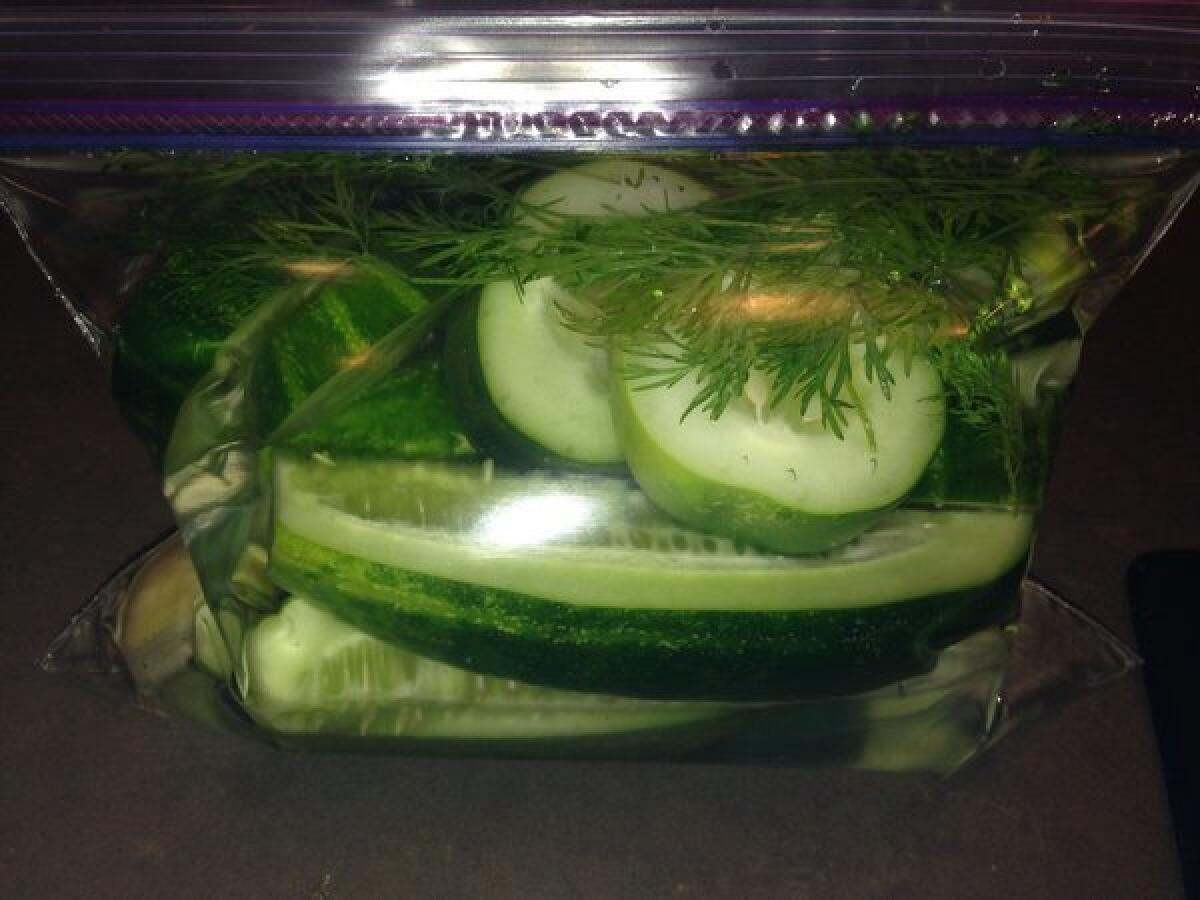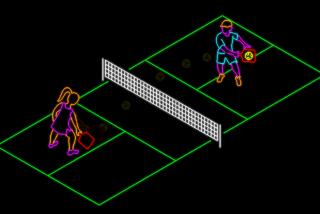‘A pickle on every plate!’ says canning and preserving teacher

- Share via
“Pickling is amazing! A pickle on every plate!” the teacher exclaimed.
Ernest Miller, who teaches the canning and preserving course that’s in its fourth week, does not necessarily mean cucumber discs or spears — though he finds those pretty fetching.
My own experience is narrower. My grandmother made traditional bread and butter pickles — pretty sweet, with the orange tinge of turmeric. But in class, we did three other kinds of pickling. And those, Miller said, are among countless possibilities.
He suggested winter squashes, cabbage, plums, turnips, carrots, onions, beets, cauliflower, tomatoes, celery.
Good pickles, he said, “are a revelation” that date at least to 3,000 BC. Thomas Jefferson, he said, was a huge fan.
In Miller’s class, we have made made and canned jam and jelly, applesauce and a few other items so far in the cafe near the Hollywood farmers market called the Farmer’s Kitchen.
This week, we pickled things. First, we filled a jar with cucumber spears (pickling cukes, which are at season’s end), dried dill and mustard seeds. They were packed raw, which is rare in the pickling world, Miller said.
His tips included not to pack them too tight or they’ll get mushy. (Sometimes chemicals are added to accomplish crunch, but not in Miller’s kitchen.) Those jars underwent low-temperature pasteurization, meaning the jars were dunked into a large metal electric canner for 30 minutes at 180 to 185 degrees. Not easy to do on a stovetop.
Our second project was kosher-style dill pickles, with fresh dill and garlic, cucumbers, salt and water. And finally, we made sauerkraut, with purple cabbage, salt, mustard seeds, caraway and celery salt.
One warning we surely heeded: Store the kraut and the kosher dills on a plate to catch leaks until they are ready, and “burp” them — daily at first — to release carbon dioxide. Do that or risk, Miller said, “a pickle bomb.”
As in the previous three classes, Miller gave us lots of technical, scientific information about preserving foods. It drives the point home that this is not like making a salad. Just toss in whatever appeals and don’t worry. The U.S. Department of Agriculture has extensive information available about canning and preserving food to make sure the results are safe.
Pickling done properly keeps molds, yeasts and bacteria away in various ways, including the acidity of the brine and using the proper containers. A couple of generations back, people often allowed a layer of yeast to form on an open pickle container and then they’d just scrape off a layer before eating.
I’ll let you know how my pickles taste in a couple of weeks. And feel free to let us know about your pickling adventures.
The course is a project of the nonprofit Food Forward and its Can It! Academy. It runs for 12 weeks, but Food Forward also offers shorter courses; check the website.
ALSO:
Three gluten-free dips for easy eating
More to Read
Eat your way across L.A.
Get our weekly Tasting Notes newsletter for reviews, news and more.
You may occasionally receive promotional content from the Los Angeles Times.










